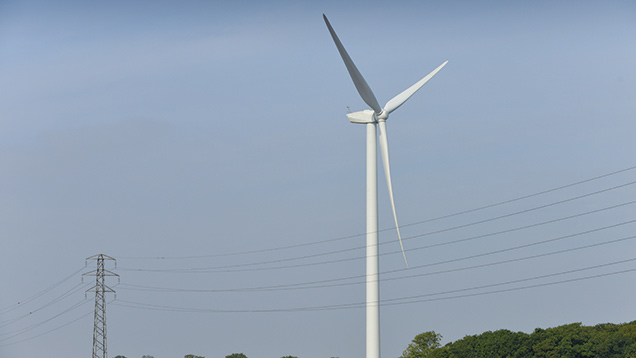Larger energy projects can bypass grid and sell power privately
 (c) Nick Strugnell/Rex
(c) Nick Strugnell/Rex Farmers and landowners developing larger-scale (500kW+) renewable energy installations should consider alternative ways of selling electricity to improve the profitability over exporting directly to the grid.
So says energy consultant Charlie Ward of New Stream Renewables, who reports growing interest in “private wire” connections between energy generators and neighbouring businesses, plus more interest from councils looking to source energy locally.
Private wire agreements essentially allow an energy generator, such as a farmer with an AD plant or wind turbine, to sell power directly to a neighbouring business without going through the grid, he explains.
“It requires a significant capital investment for the cabling, metering and connections, but could benefit both parties. Prices have to be negotiated, but the electricity generator should receive a higher price than it would by selling to the grid, while the end user can buy power for a lower price than they would otherwise.”
See also: Get the best deal from a competitive green energy market
For example, where the end user typically pays £90/MWh for electricity and the generator would normally receive £60/MWh for exporting to the grid, a mutually acceptable price of £80/MWh might be agreed and renegotiated annually, he explains.
Any agreement and pricing should reflect the upfront investment needed to connect the power supply and who bears all or part of that cost, Mr Ward says. It is also important to consider the stability of the business buying electricity and how their demand profile fits with the energy generation from the renewable installation, he says.
“It can be easy to enter into private wire agreements on a fairly relaxed basis, but it is worth getting formal agreements in place in case there is a dispute. Both parties still have to be connected to the grid, so neither would be cut off if the deal did break down.”
Typically, deals for private wire agreements vary in length from one to three years, but can be longer.
Power sleeving
Another option for selling power is through “sleeving” type agreements where power is sold to an end user, but delivered via the national grid rather than a private supply, says Mr Ward.
“We’ve seen more interest from local councils wanting to buy local power and are also aware of some cases where councils are looking to invest in energy projects themselves.”
Such agreements may be worth considering to help projects get through the planning process, he suggests, but again, it is only likely to be applicable to larger-scale energy producers.
“The government is keen to encourage local energy generation and consumption, so the background impetus is there. If you’re developing a larger renewable energy project, it’s worth considering these options for selling power.”
There may also be scope for sleeving agreements with large companies looking to improve their green credentials, he adds. However, many corporate businesses have company-wide energy procurement policies that mean power has to go via a third party, such as the power company supplying that business.
“These type of sleeving arrangements are only really applicable to very large-scale energy producers and as yet we haven’t seen anyone looking to source power from smaller-scale generators. But with more businesses looking at their corporate social responsibility, there may be more scope for farmers in the future.”
M&S, for example, is already buying gas produced from anaerobic digestion to offset its carbon emissions under the carbon credits scheme. Last September it agreed a deal with Future Biogas to buy 35,000MWh of biomethane certificates. Gas is produced at the Vulcan AD plant near Doncaster and is injected directly into the national grid.
